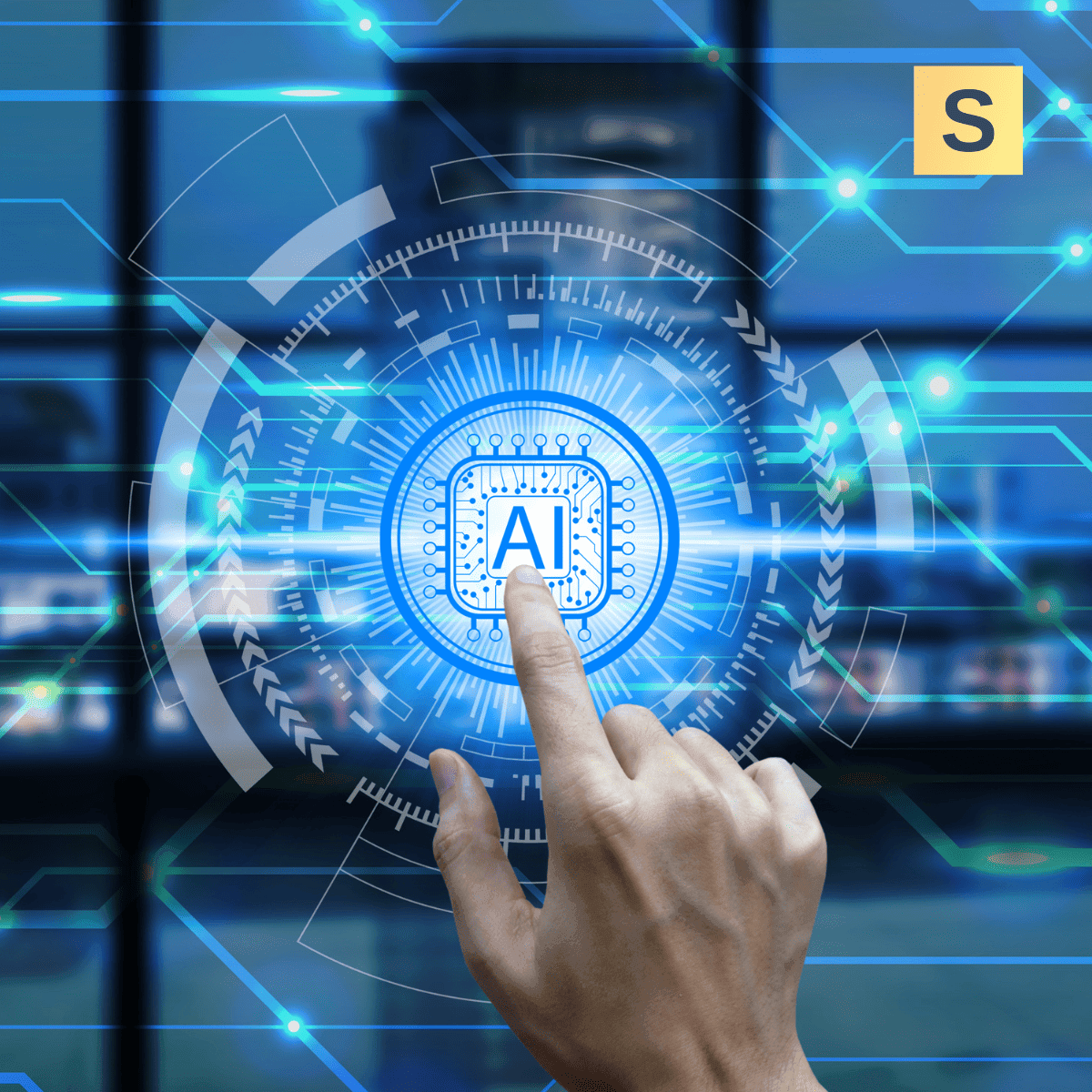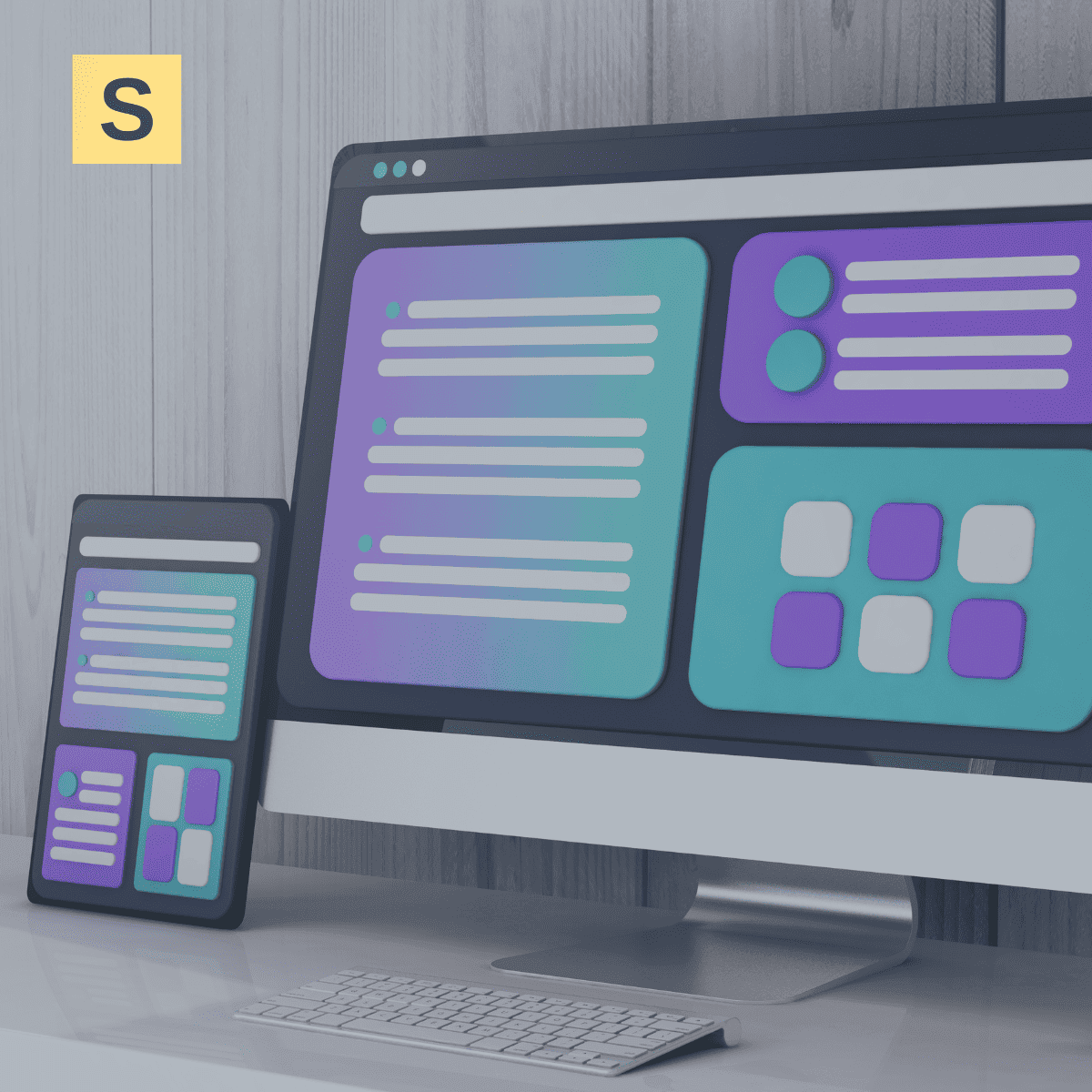Whether you're building your first MVP, modernizing a legacy application, or scaling a SaaS solution to serve thousands of users, this comprehensive SaaS development guide walks you through every technical step required to succeed. We’ll cover the full SaaS lifecycle, from designing scalable, cloud-native architecture and deploying CI/CD pipelines to enforcing security best practices.
With over 8 years of experience developing high-performance SaaS platforms across HRTech, HealthTech, MarTech, and other industries, Seedium provides the tech expertise and real-world strategies needed to bring SaaS products to life.
Key aspects of the SaaS app development process
Developing SaaS applications requires a fundamentally different approach from traditional software development. SaaS apps are inherently cloud-native, multi-tenant, and scalable. This demands support for continuous delivery pipelines and the ability to roll out frequent, seamless updates with zero downtime.
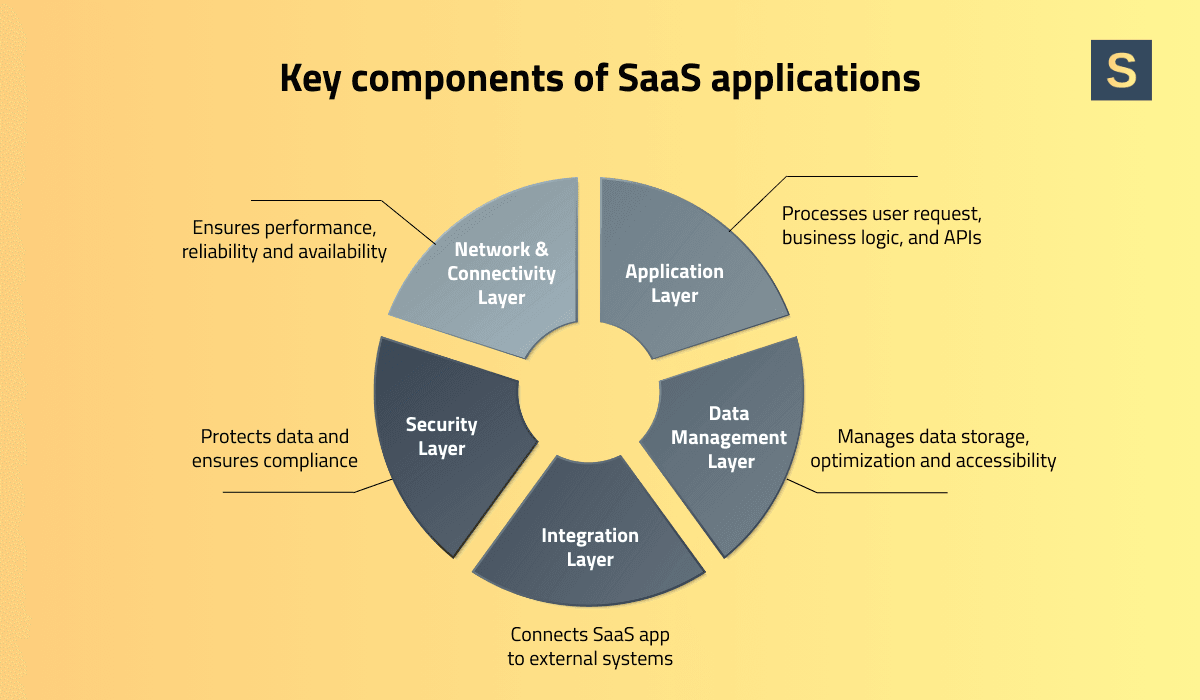
Before writing a single line of code, it’s essential to align on a few core principles that underpin successful SaaS development:
- Start with clearly defined business and user objectives. A deep understanding of your users’ needs and the value your product delivers should guide every design and architectural decision.
- Design for scalability and reliability from day one. Your SaaS application must efficiently handle fluctuating loads while maintaining high availability and performance. This should be a central discussion with your development team.
- Build security and compliance into the foundation. Treat security and regulatory requirements as integral parts of your infrastructure, data management, and development lifecycle, not optional features added later. A security-first mindset makes your product resilient, trustworthy, and compliance-ready by design.
- Embrace CI/CD and agile methodologies early. Rapid iteration cycles, automated testing, and continuous integration are essential for responding to user feedback quickly and maintaining stability during fast-paced development.
In short, SaaS development is less about feature delivery and more about building a robust, secure, and ever-evolving service.
Read also: AI in SaaS: A Strategic Guide for Business Leaders
SaaS application development from scratch: 9-step guide
If you're in the early stages of building your SaaS app, this step-by-step guide will help you avoid common pitfalls. If you’re further along and focused on scaling or migrating, feel free to skip ahead.
1. Discovery Phase: where tech meets business
Your goal in this phase is to align business strategy with technical execution. Bring together key stakeholders, product owners, marketing leads, developers, and compliance experts to define the strategic foundations of your SaaS product development.
Target audience and core use cases
Don’t just define “who” your users are, dig into what they need, what they expect, and how they’ll interact with your product. Use the following questions to build rich user profiles:
- Who exactly will use the product? (small business owner, HR manager, financial analyst, marketer, etc.)
- What industry do they work in? (SaaS for e-commerce ≠ SaaS for recruiting)
- What is the size of their company? (This impacts scalability, pricing plans, and product complexity)
- What are their biggest pain points and daily tasks? (automation, reporting, speed, cost reduction, etc.)
- How are these tasks handled today? (spreadsheets, third-party services, manual workflows, etc.)
Once you've built strong user personas, move on to identifying the core use cases. These will help you prioritize features and craft a user experience that delivers value quickly.
Ask yourself:
- What are the most common scenarios the user encounters?
- What do users want to accomplish in the first five minutes?
- What is the minimum set of features that helps them succeed?
Example: For a SaaS project management tool, a core use case might be: create a project → add a team → set a deadline → receive a reminder.
Mission-critical features for MVP
Core features are essential to fulfilling the product’s value proposition. They should emerge directly from user needs, not from internal stakeholder preferences.
Each MVP feature should:
- Solve a specific, high-priority use case
- Be relevant within the first 7 days of product use
- Have no overly complex alternative
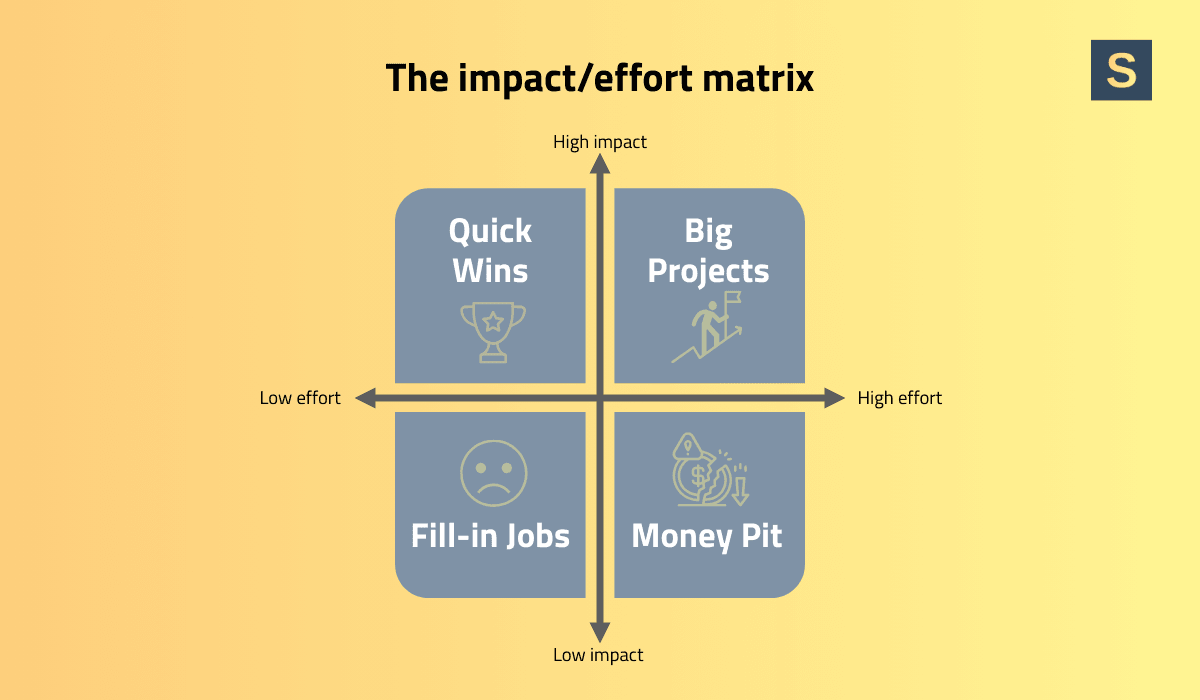
An MVP is not a rough draft, it should be a fully functional version that delivers core value. Prioritize simplicity over volume. A clean, intuitive interface with strong usability is more impactful than a feature-packed but confusing one.
Also, foundational components like security, user authentication, and API access are non-negotiable, even for the earliest versions.
Growth-enabling features for future sprints
As your product matures, it's important to think beyond foundational functionality and begin developing features that directly support growth. These aren’t launch-day essentials, but they’re critical for scaling, improving user retention, and unlocking new revenue streams. Growth-enabling features enhance the product experience, strengthen user loyalty, and help expand into new markets.
Examples of such features include:
- Integrations with third-party services (Slack, HubSpot, Google Calendar, etc.)
- Analytics and reporting tools (dashboards, graphs, A/B testing)
- Multi-user access and role-based permissions
- A mobile version or Progressive Web App (PWA)
- White-labeling or custom branding for clients
- User acquisition mechanisms (referral programs, free trials)
- Internationalization support (multilingual interfaces, multi-currency capabilities, localization)
These features should not be included in the MVP. It's better to validate your core product with real users, gather feedback, and then iterate based on what the market demands. For example, growth features for a SaaS platform targeting accountants might include automatic tax report submission, bank integrations, or AI-based cost analysis.
2. Choosing SaaS architecture
Architecture is the backbone of your application, it defines how easily your SaaS can scale. Choosing between monolithic or microservice architecture isn’t simply a tradeoff between speed and reliability. While microservices are often associated with scalability, many successful platforms (think about GitLab) use a monolithic core to serve millions of users.
For 99% of early-stage products, we recommend starting with a monolithic architecture. It’s simpler to build, easier to manage, and more cost-effective.
In some cases, starting with a microservice architecture makes strategic sense. For example, if you're building for high traffic or a global customer base from the beginning, or if your SaaS has distinct components that can grow independently (payment platforms, notifications services, etc.).
Read also: How to Build Scalable Multi-Tenant SaaS Architectures: Tech Leader’s Guide
3. Choosing the right tech stack
Selecting the right technology stack is a strategic decision that impacts every stage of SaaS development, from initial velocity and team productivity to long-term scalability and maintainability.
The right stack enables faster development, easier onboarding of new developers, and access to modern tools for security, performance, and testing. A mismatched stack, on the other hand, can lead to technical debt, development slowdowns, and expensive refactoring down the line.
When selecting your stack, consider:
- Team expertise
- Project complexity and size
- Expected traffic and data volume
- Security and compliance requirements
- Ecosystem maturity and community support
- Third-party integration needs
- Long-term scalability and maintainability
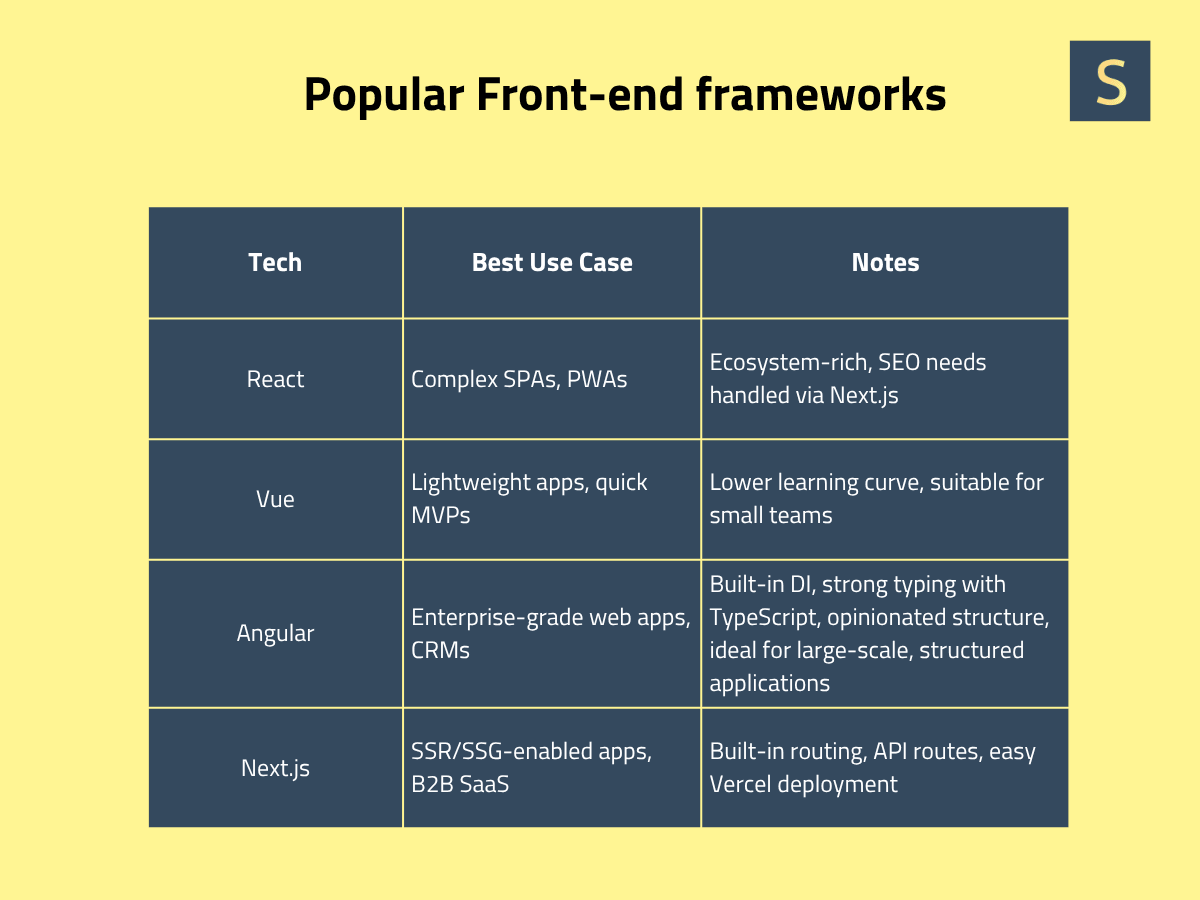
Read also: Progressive web app (PWA) development guide
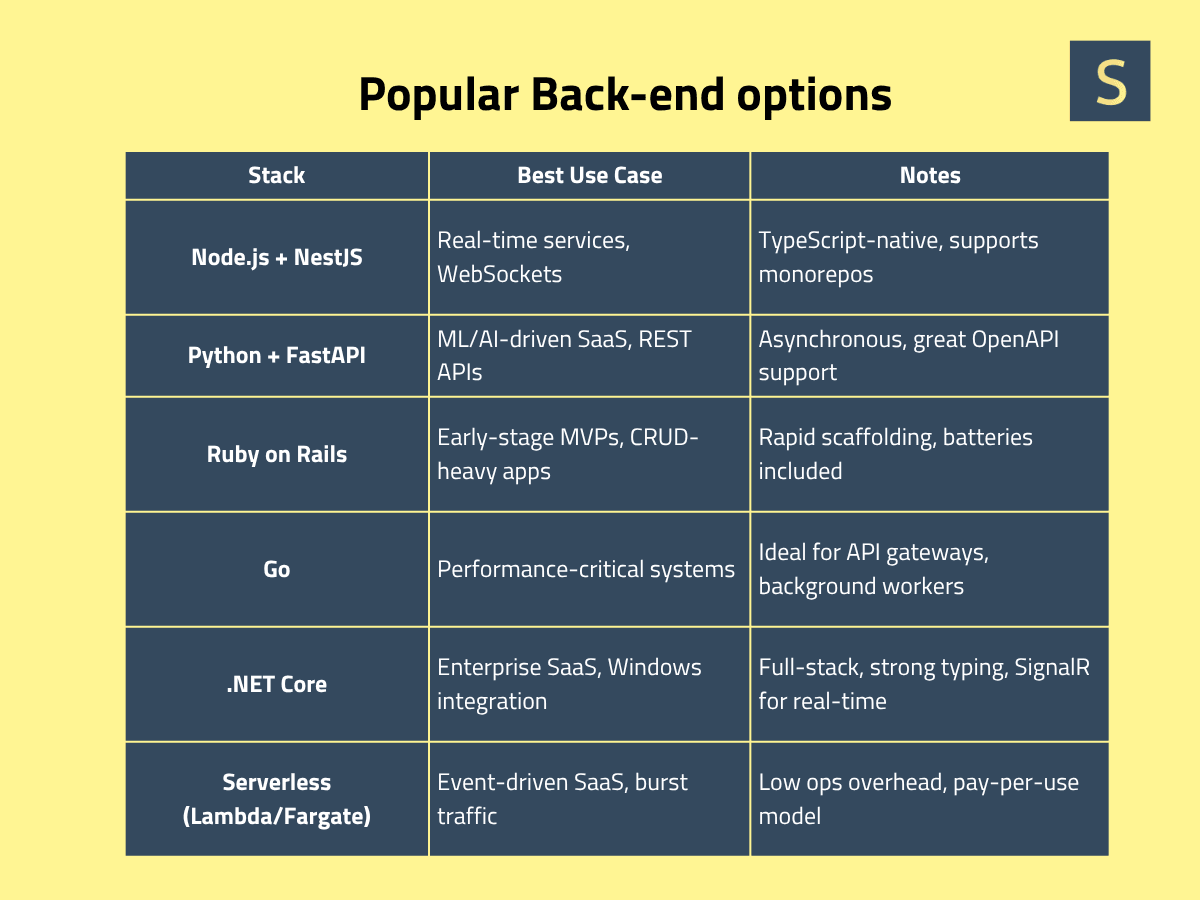
Read also: React vs Angular: What to Choose for Your Next Web Project
Choosing database
The database is the pillar of applications in many ways. How you look up, store, and manipulate data directly affects performance, scalability, and development speed.
For transactional applications that require complex queries and relationships, SQL databases like PostgreSQL or MySQL are ideal with their reliability, data integrity, and support for normalized schemas. In case of valuing flexibility over strict form, like in fast-evolving projects or the storage of unstructured data, NoSQL databases like MongoDB or DynamoDB can offer faster iteration and scalability.
Caching is also important for high-performance applications. Using tools like Redis or Memcached helps with offloading time-sensitive or high-frequency tasks, reducing database load and latency.
Need expert advice? Contact us. Our consulting services, including fractional CTO support, can help you define the optimal database architecture and tech stack to accelerate your SaaS product development.
4. Infrastructure options
Infrastructure is another crucial decision in SaaS development. Proper configuration depends on your product stage, compliance needs, and team expertise.
For most SaaS applications, public cloud is the default starting point because it scales and is globally accessible. Organizations with strict data residency requirements or legacy systems may opt for a hybrid cloud model, allowing gradual cloud adoption while keeping sensitive workloads on-premises.
For early-stage teams that prioritize speed and ease, PaaS platforms (like Heroku or Vercel) eliminate infrastructure overhead, enabling developers to deploy quickly without heavy DevOps knowledge. As the product grows, containerization (with Docker and orchestrators like Kubernetes) offers greater control, optimized resource utilization, and scaling options.
Here are common infrastructure models and their use cases:
- Public Cloud (AWS, GCP, Azure) - The default for 90% of SaaS is elastic, scalable;
- Hybrid Cloud (AWS + On-Prem, Azure Arc) - Gradual cloud migration, data residency needs;
- Multi-Cloud (AWS + Azure + GCP) - Redundancy, vendor-neutrality, and failover strategies;
- PaaS (Heroku, Vercel, Railway) - MVPs, speed-focused teams;
- Containerized (Docker + Kubernetes/ECS) - Mid-to-large-scale apps with orchestration needs;
- Serverless (AWS Lambda, Vercel Edge) - Usage-based cost, low-maintenance functions.
Read also: Hybrid Cloud vs. Multi-Cloud: Choosing the Right Solution
5. UX/UI Design
User experience is a critical factor in product adoption, retention, and customer satisfaction. UX/UI should never be treated as an afterthought or superficial layer. Great design is rooted in real user flows and accessibility from the beginning.
Key UX/UI elements to prioritize:
- Dynamic dashboards tailored by user role and data
- In-app onboarding flows, tutorials, and guided tours
- Responsive layouts for all screen sizes
- Dark/light mode preferences
- Accessibility compliance (WCAG 2.1+) baked into the design system
Support for WCAG standards not only ensures your product is inclusive but also helps you meet legal accessibility requirements. Likewise, thoughtful UX reduces onboarding friction and boosts long-term retention.
6. Assembling a SaaS development team
A strong SaaS team includes several key roles that form the foundation for building a reliable and scalable product. While the final team composition depends on the project scope and complexity, the following positions are typically essential:
- CTO/Product Owner – acts as the business-technical bridge, aligning product vision with engineering execution.
- Frontend & Backend Engineers – responsible for component-based development, API integrations, and delivering a smooth user experience.
- Cloud Architect / DevOps – ensures infrastructure automation, CI/CD, and system observability for performance and uptime.
- QA Engineer – provides end-to-end test coverage, including load testing, regression testing, and automated test pipelines.
These roles help de-risk product development and ensure a strong technical foundation from day one.
Looking to augment your in-house development capabilities? Hire Seedium's dedicated development teams.
7. Quality Assurance
In SaaS development, testing is not a luxury, it’s a necessity. Quality assurance ensures the stability and security of your product in a cloud environment, where it often serves dozens, hundreds, or even thousands of users simultaneously.
Key types of testing include:
- Unit tests to check individual functions or components and quickly identify the absence of errors, even before integration.
- Integration testing - checking interaction between modules, services, or APIs.
- End-to-end testing - simulates user behavior, checking the full path: from login to the execution of a business transaction.
- Performance and load testing - shows how the system performs under pressure or when scaling.
- Security testing helps to discover vulnerabilities, avoid data leaks, and meet the requirements of GDPR, SOC 2, HIPAA, etc.
A comprehensive, automated testing strategy should be in place from the start. Integrated into your CI/CD pipeline, automated tests should run with every commit to maintain code quality and accelerate release cycles.
An effective QA strategy isn't just about avoiding bugs, it’s a competitive advantage. It reduces time to market, builds user trust, and lowers the risks associated with production releases.
8. Deployment strategies
Deployment strategies are methods for implementing updates into a production environment with minimal risk to users. Choosing the right strategy is critical to ensuring service continuity, error management, and rapid rollback. The choice depends on the type of product, the size of the changes, the technical architecture, and availability requirements.
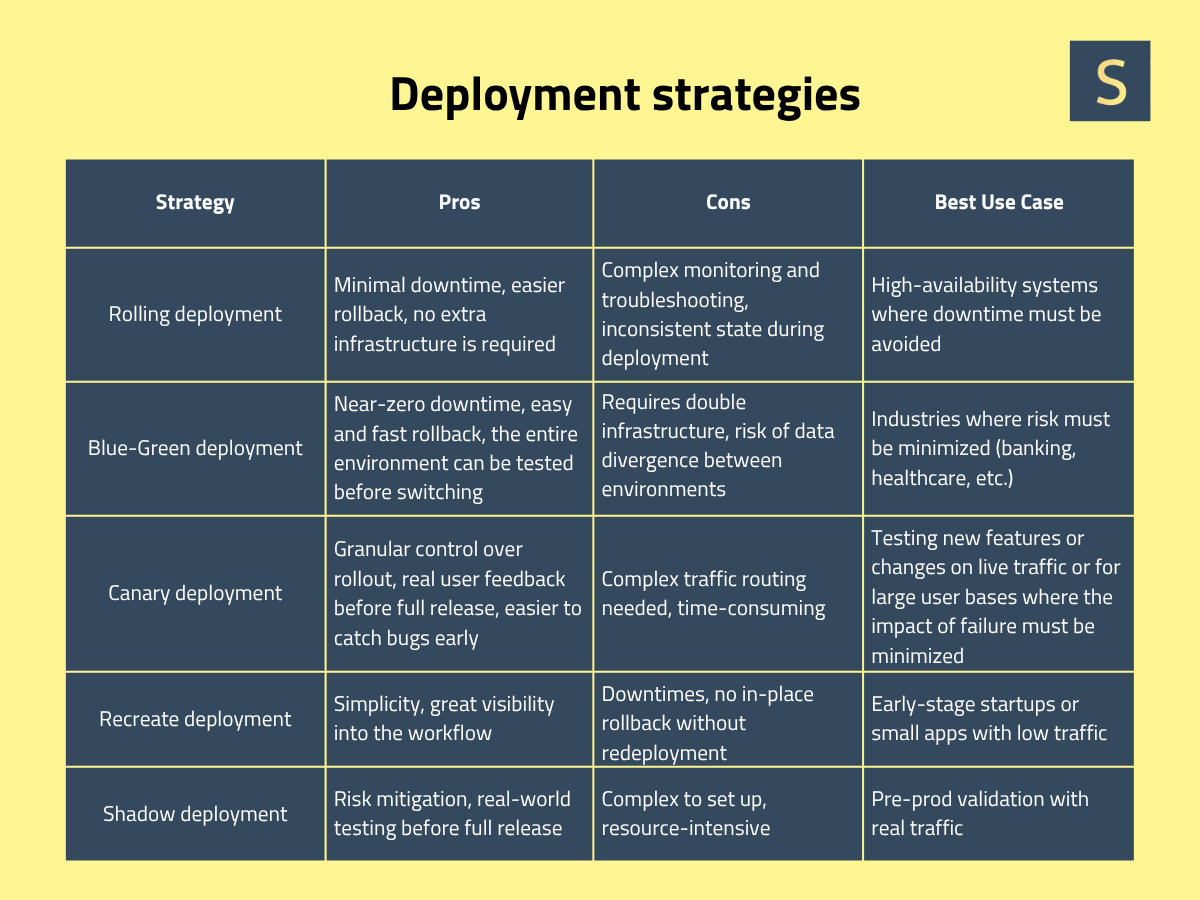
9. Monitoring and maintenance
Launching your product isn’t the finish line, it’s the beginning of continuous support, iteration, and scaling. For a SaaS app to remain fast, reliable, and user-friendly, automated updates and real-time monitoring are essential.
CI/CD automation is the backbone of modern SaaS operations. It allows teams to ship improvements quickly and safely, without service interruption or manual intervention.
Monitoring and observability provide insights into your product’s behavior in the real world. These systems answer the critical question: “What’s happening right now?”
This includes:
- Logs and metrics: provide the ability to see server load, response time, errors, unstable behavior, etc.
- Notifications and alerts: The system will warn the team before users have time to notice a problem.
- Real-time error tracking: to understand exactly at what stage, for whom, something went wrong.
- Development behavior analysis: Understanding how users interact with the product helps identify bugs and improve UX/UI and business indicators.
Without high-quality automation and monitoring, a SaaS product can lose user loyalty at the first stop. With it, it has the opportunity to scale without chaos.
Seedium case study #1: AI Ignition - SaaS AI-powered resume builder
SaaS application development occupies an important place in our company’s experience. Here is one of the projects we worked on.
Industry: HRTech
Project duration: 6+ months
Client's goals:
The client needed assistance in building the front-end part of an advanced AI-powered resume builder. The solution had to be scalable and reliable, and provide an exceptional user experience.
The main challenges involved handling complex business logic and ensuring smooth integration with third-party services.
Solutions we provided:
- Created a high-performance web architecture that scales easily to meet growing user demands
- Used Vercel for seamless application deployment
- Collaborated closely with the back-end team on the client’s side to provide CMS and Stripe integrations
- Set up CI/CD pipelines to ensure rapid, high-quality delivery.
Results:
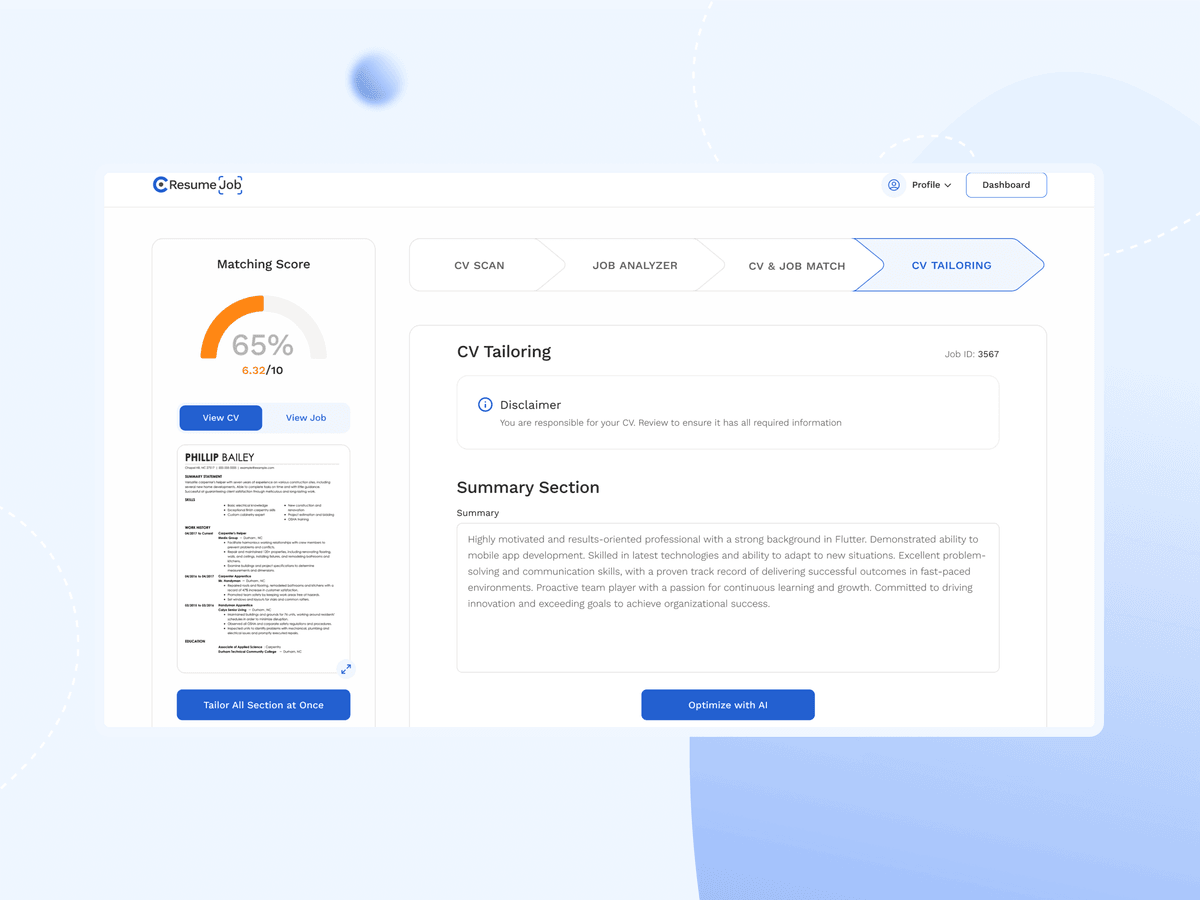
The client received a scalable, feature-rich SaaS solution that enabled a confident market launch. Early user feedback highlighted strong satisfaction with the app's functionality and responsiveness.
Feel free to check out the full case study here.
How to migrate your existing app to SaaS
Converting an existing application to SaaS is a strategic move that can open up new opportunities for scaling, recurring revenue, and a revamped business model. But like any major transformation, it requires a clear understanding of the potential benefits, risks, and real-world effort.
Before making any technical changes, it’s essential to weigh the pros and cons:
- Is your infrastructure ready for multi-tenancy?
- How will billing, access, security, and scaling logic change?
- What new requirements will arise for support, documentation, and user onboarding?
A step-by-step migration process follows this:
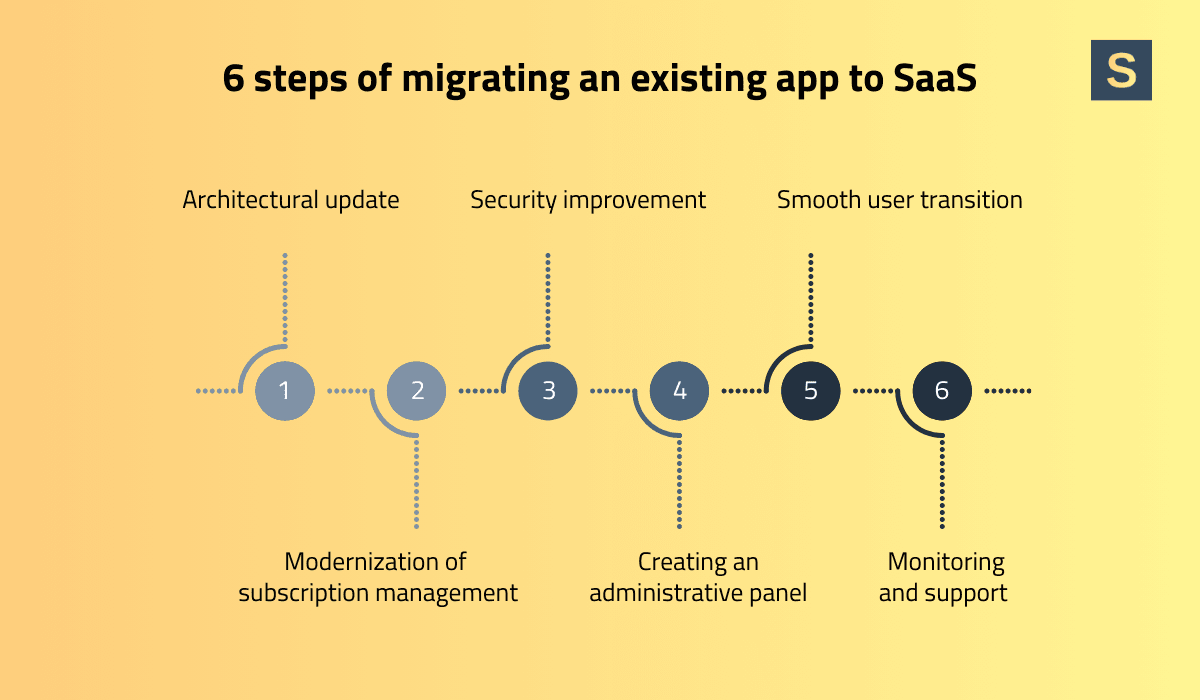
- Architectural update: building multi-user logic, creating isolated environments for different customers or segments.
- Modernization of billing and subscription management.
- Security improvement taking into account new requirements.
- Creation of an administrative panel for customers.
- Smooth user transition without loss of data or functionality.
- Monitoring and support during and after the transition.
Migration is not just a technical upgrade, but a complete re-evaluation of the product. However, the results are worth the effort if approached strategically and consistently.
Seedium case study #2: Smarter Contact - SaaS communication platform
As the user base grows, it sometimes turns out that the first version of the application no longer has the technical capabilities to scale. In this situation, rebuilding the app becomes the most reasonable solution. This was the case with the following project.
Industry: Telecommunications
Project duration: 12+ months
Client's goals:
The client's MVP version of their SMS marketing platform had significant market success. However, when the project required scaling, the company lost its sole developer and needed to find a new team to take the product to the next level. That's where Seedium came in.
Solutions we provided:
- Conducted code refactoring to eliminate technical debt
- Migrated from a monolithic architecture to microservices to improve product performance and scalability
- Migrated from JavaScript to TypeScript to improve product stability and simplify long-term support
- Implemented a number of security features in line with industry best practices
- Set up CI/CD pipelines to ensure rapid, high-quality delivery.
Results:
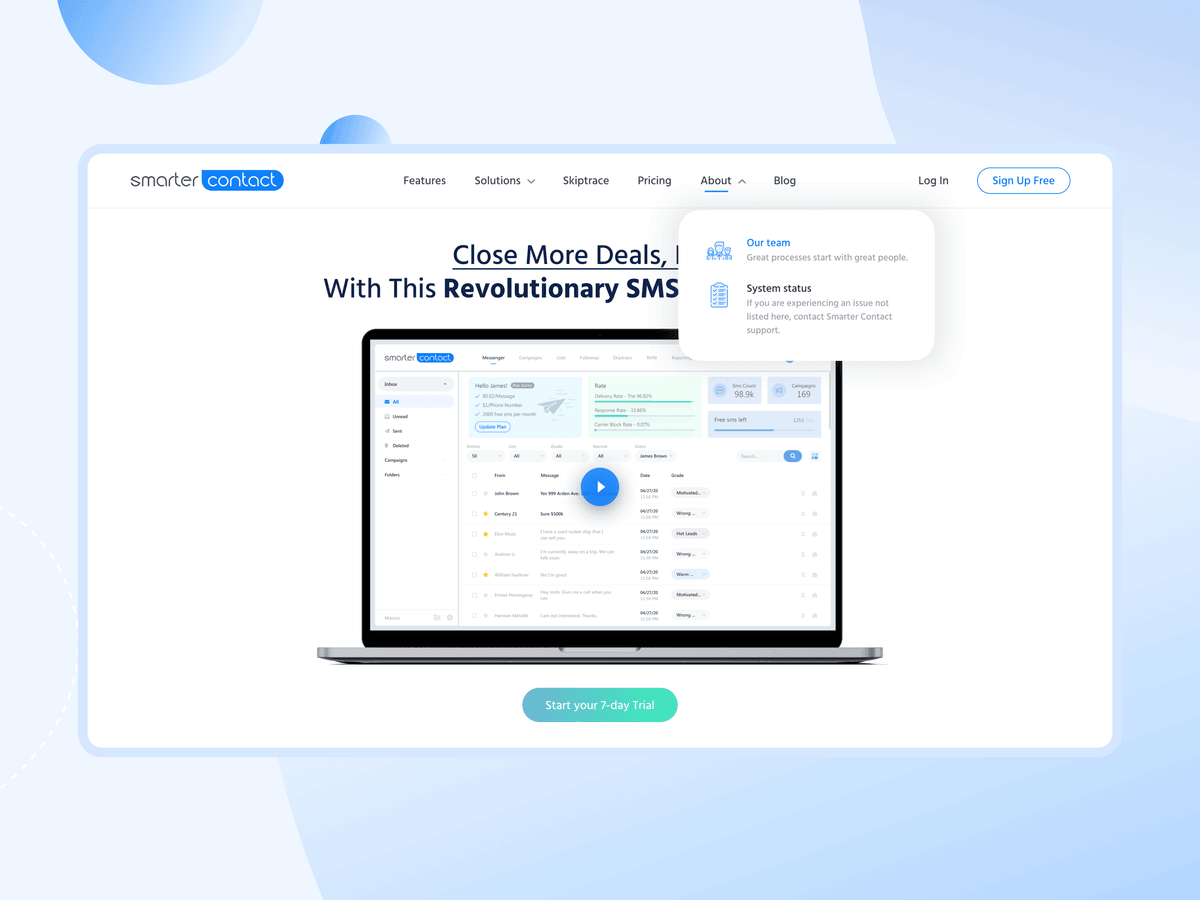
The updated version of the product enabled the client's business to grow actively, increasing the user base from 300 to over 5,000. Today, the product has evolved into a multifunctional communication platform serving more than 7 industries.
Feel free to check out the full case study here.
How to scale a SaaS application
Scaling is not some kind of response to the growth of the number of customers, but simply a strategic stage of development of your SaaS product from “doing it for the first 100 customers” to “doing it stably for thousands and tens of thousands at the same time.” From here to there, you need to not only apply load balancing but also do it cost-effectively, without work failures, and maintain performance.
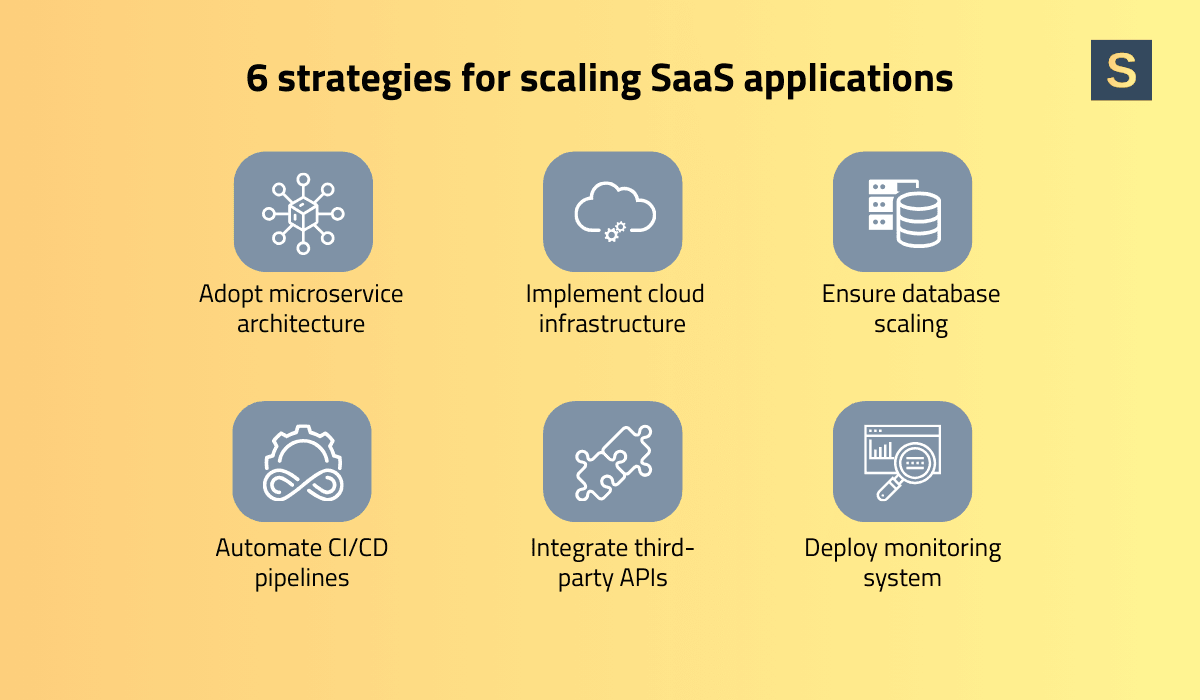
The first of the basic principles is horizontal scaling. Instead of “pumping” a separate server, modern SaaS products are deployed in containers that can quickly increase in size. Kubernetes or AWS Fargate will come to the rescue here, allowing for dynamically adding computing resources depending on the load.
Another approach is to divide the logic into independent blocks. Scaling a separate part of the system is much easier if you work on a microservice architecture or a modular monolith. This helps avoid reloading the entire application when changing a single service and allocates resources efficiently.
When the system starts to serve many simultaneous events, it is essential to avoid communication bottlenecks. This is where asynchronous messaging systems come into play. They provide stable interaction between services, allowing them to work independently of each other.
Properly executed auto-scaling is insurance that your SaaS will not only survive growth but also remain reliable, fast, and manageable even during peak periods.
Read also: Scaling Your Business with Scalable Software Architecture
Seedium case study #3: Picflow - SaaS platform for professional photographers
Let's delve into another SaaS project from our portfolio that demonstrates the importance of architectural scalability for product growth.
Industry: Design & Branding
Project duration: 12+ months
Client's goals:
The client approached Seedium to build a collaborative app for professional photographers, allowing fast and secure uploads of images of any format and size.
Seedium solutions:
- Designed a scalable architecture and back-end infrastructure to ensure high performance and reliability under increasing user loads
- Provided design and branding options for gallery customization
- Implemented strong security features, including a secure authentication system, public/private/unlisted profile settings, passwords, the ability to track and identify visitors, and more
- Integrated CMS for easy content management
Results:
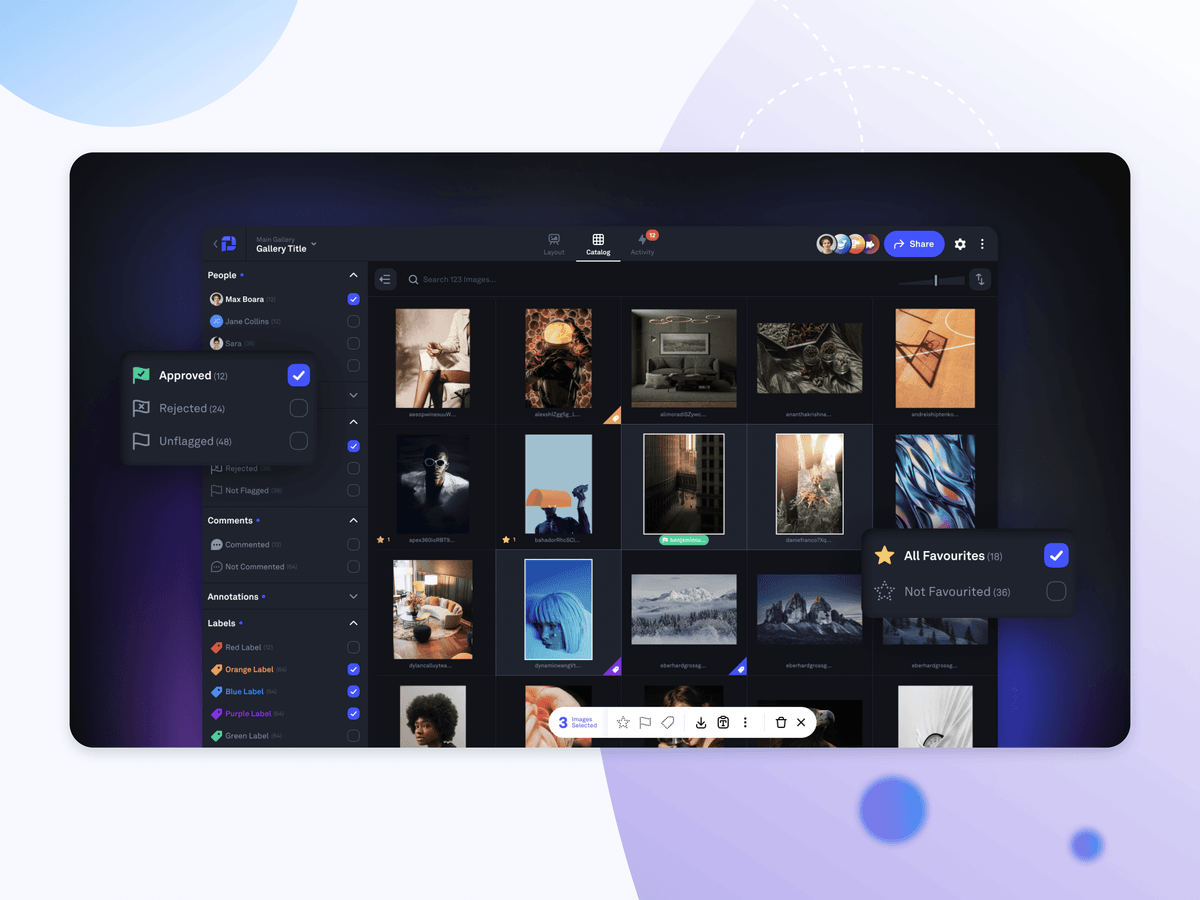
Picflow has grown into a stable, high-performance platform with over 10,000 registered users and continues to evolve and expand functionality.
Feel free to check out the full case study here.
Best practices for SaaS app development
Building a successful SaaS product is not just about a quick MVP release but long-term reliability, scalability, and readiness for change. This is especially important for B2B solutions, where customer expectations for security, integrations, and SLAs are much higher. It is important to implement strategically thought-out technical and business approaches from the beginning to avoid returning to basic solutions at later stages of development.
Below are key best practices that will help you build a truly strong SaaS product that is ready for scaling, integrations, and growing user requirements.
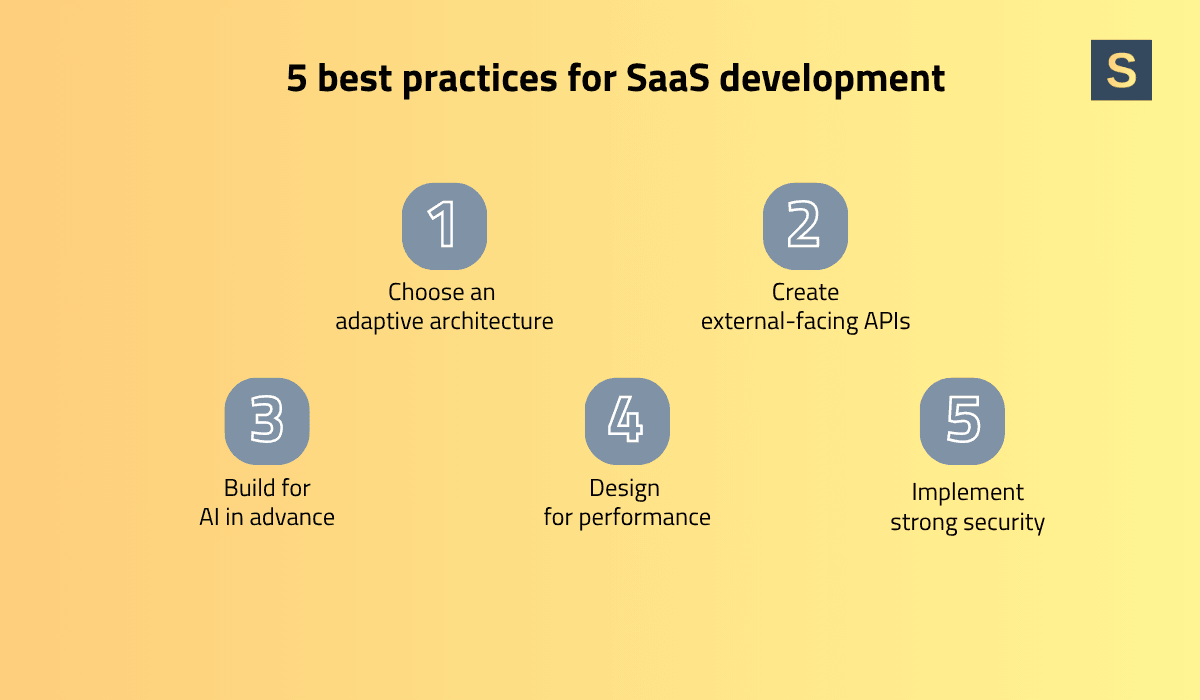
1. Choose an adaptive architecture
SaaS applications should scale and change in sync with the product. The best solution today is microservices, which allow you to scale each module separately. But for young teams or MVPs, a modular monolith is suitable - it is less complex to maintain but also structured.
2. Design for performance from day one
Don't wait until the application "starts to slow down". From the very beginning, integrate:
- Fast loading (lazy loading) for heavy modules
- Pagination in the API instead of displaying all the data
- Indexing databases for fast search queries
- This significantly increases response time and UX.
3. Build in AI capabilities in advance
Perhaps, even if you don't work with Artificial Intelligence yet, leave room in the architecture for:
- Data streams that can later be used for ML
- Inference API calls (for recommendations, classifications, etc.)
This helps to integrate AI functionality quickly in the future.
4. Implement security from the start
Security is not an afterthought, but a must-have from the first line of code. Key requirements:
- Data encryption
- Role-based access control (RBAC)
- Compliance with GDPR, SOC 2, etc.
This is especially relevant for SaaS in finance, healthcare, and B2B.
5. Create external-facing APIs
Your application should easily integrate with other platforms relevant to your users (Stripe, Zapier, Slack, etc.). To do this, you need to:
- Plan APIs with documentation
- Ensure a stable update schedule
- Secure interfaces through keys, OAuth, and throttling
This set of practices allows you to launch the product faster and avoid common mistakes when scaling or integrating in the future.
Read also: SaaS Trends: Key Insights for SaaS Tech Leaders
Challenges of building SaaS applications
Building a SaaS product is not merely a tech feat; it's also about solving a group of business and infrastructure problems.
Multi-tenancy is one of those. Eliminating data isolation between clients but leaving behind a shared code base and centralized updates requires deliberate planning and ubiquitous access management practices.
Regulatory compliance also generates complexities. Regulators such as GDPR, HIPAA, and SOC 2 require teams with legal know-how, data processing policy, similar audits, and technical security measures. Neglecting this issue can result not only in penalties but also in a loss of reputation.
In addition to legal and architectural complexity, SaaS applications are susceptible to downtime. Even momentary failures can lead to customer churn and loss of trust. Resilience, monitoring, and being prepared for rapid recovery are therefore imperative.
No less vital is scalability: without sound logic, increases in the number of users can very quickly become a technical dead end.
What affects the cost of SaaS development
SaaS application development can take time depending on business goals and technology deployment. First, it is due to the complexity of functionality: the number of users' roles, access levels, custom logic, and external integration demonstrates higher labor intensity. Specifically, calculation links of payment systems, marketing platforms, or third-party CRM might be expensive.
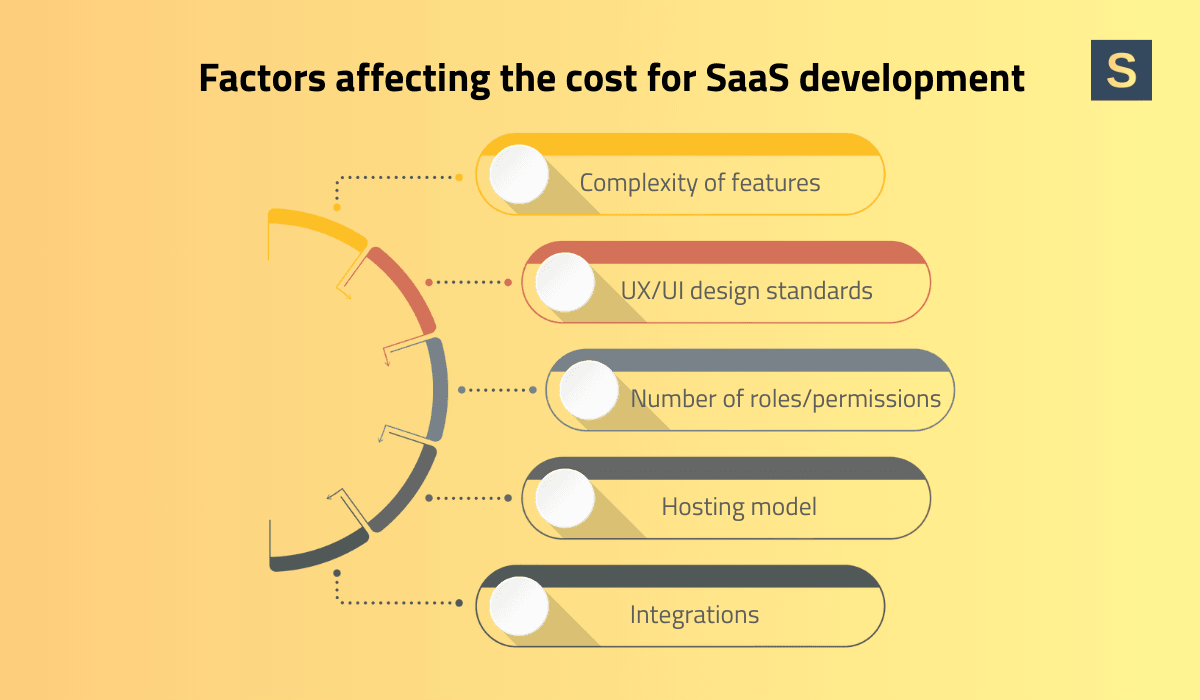
So, summarizing, cost is influenced by:
- Complexity of features and integrations
- UI/UX depth and design standards
- Number of roles and permissions
- Hosting model (multi-region, self-hosted)
- AI, analytics, or chat integrations, and more.
Make sure to discuss all product requirements with your development team to get more precise project estimates.
Read more: How to Estimate SaaS Development Costs
Why hire SaaS developers at Seedium
Seedium is a reliable partner for growing startups and SMBs in taking software products from inception to mass-scale release. The company boasts over 8 years of expertise in creating SaaS platforms, cloud, and PWA solutions. This experience has allowed us to understand the technical and business aspects of digital products comprehensively.
Our portfolio includes over 200 released products. We provide services for the whole product development lifecycle: from the discovery stage and interface design to applying DevOps, QA, and support after release. And if you’re looking to augment your in-house team with experienced designers and developers, we can meet your needs too.
Collaboration with Seedium is cooperation with confidence in the product's quality, flexibility, and technological maturity. Feel free to check out our SaaS app development services.
Ready to build your SaaS success story? Talk to our team today.



